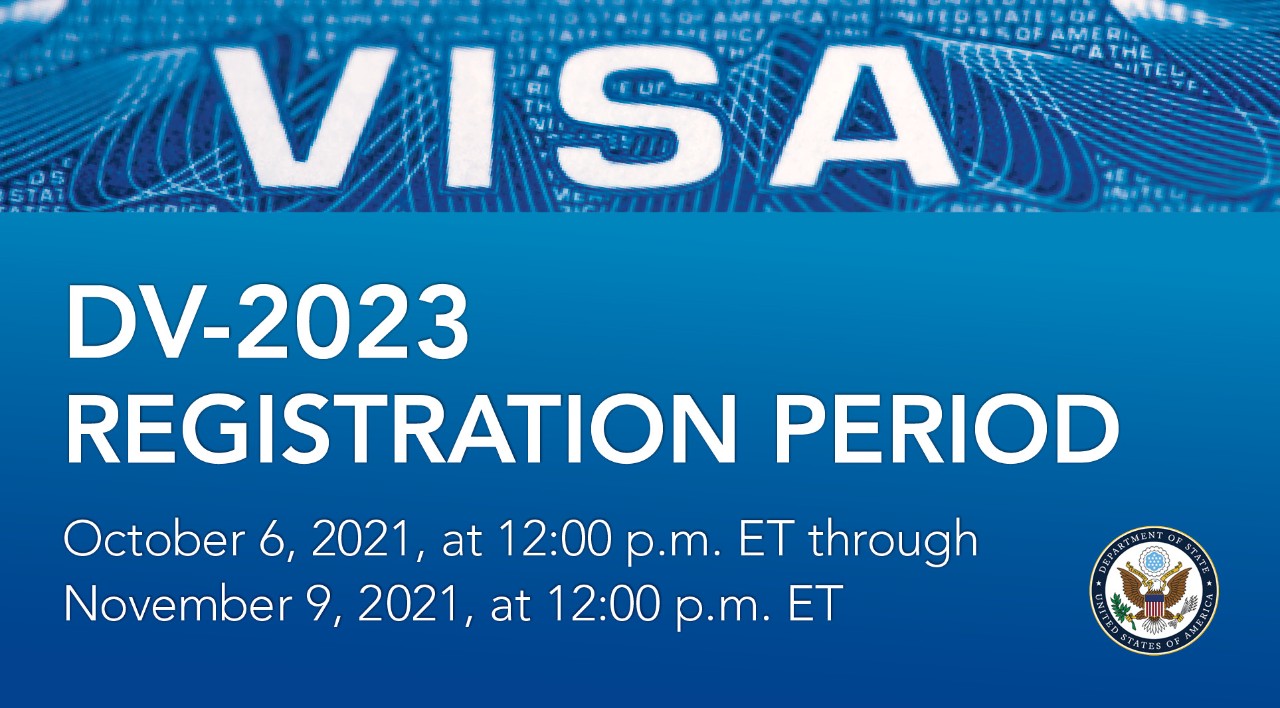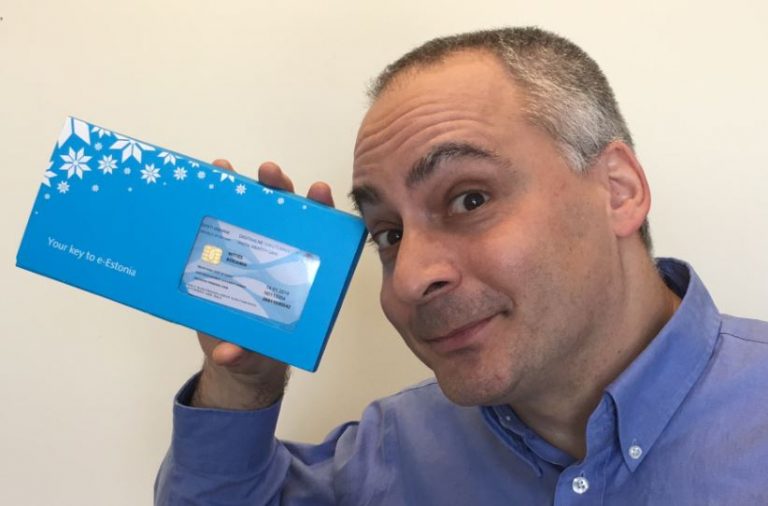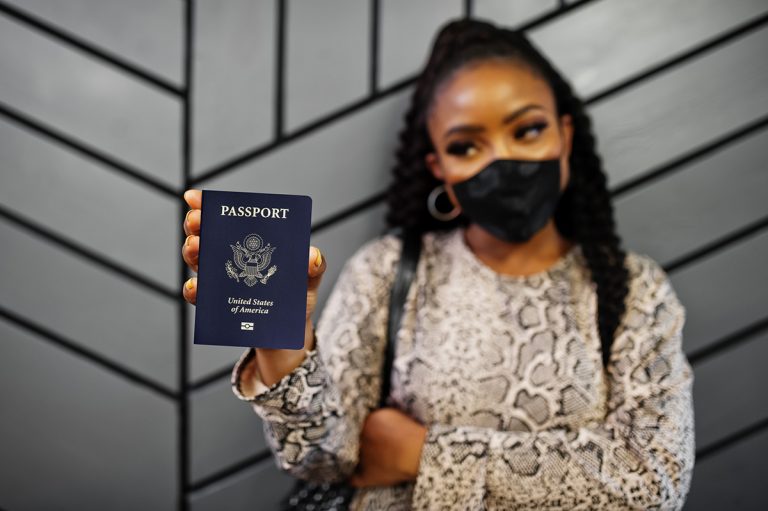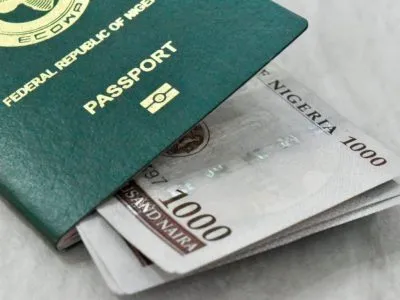Electronic Diversity Visa Program 2023 Application
The Electronic Diversity Visa (DV) Program provides up to 55,000 diversity visas each year, drawn randomly from all applicants who meet the strict eligibility requirements and come from countries with low rates of immigration to the United States.
This program provides an important opportunity for people from countries that typically have very low rates of immigration to the United States to reunite with family members or friends already in this country.
What is Electronic Diversity Visa Program?
The Diversity Visa program is the United States congressionally-mandated lottery open to nationals of countries with historically low rates of immigration to the United States. The program was created by the Immigration Act of 1990, which stated in part that it would “advance the national interest”. In the fiscal year 2011, 635,228 people applied for this visa worldwide.
The Electronic Diversity Visa Entry Application System (“EDVEAS”) allows entry into the DV program. Applicants must meet certain eligibility requirements and then complete a variety of forms, including the Electronic Diversity Visa Entry Application (or “Entry Form” or “Form”) and provide supporting documentation.
Submit an Entry
There is a limited period of time during which you can register for the Diversity Immigrant Visa (DV) Program during each fiscal year. Each year, the Department of State publishes detailed instructions for entering the DV Program. These instructions include the dates of the registration period during which you will be able to enter.
All entries must be submitted electronically on the Electronic Diversity Visa (E-DV) website during the specified registration period. No late entries or paper entries are accepted. The law allows only one entry by or for each person during each registration period. The Department of State uses sophisticated technology to detect multiple entries. If you submit more than one entry you will be disqualified. This website does not become active for submitting an entry until the date and time specified on the DV Instructions webpage.
Detailed guidance for completing the online entry form is included in the DV Instructions.
After you submit a complete entry, you will see a confirmation screen containing your name and a unique confirmation number. Print this confirmation screen for your records. It is extremely important that you retain your confirmation number. It is the only way you can check the status of your entry, and you will need it to obtain further instructions or schedule an interview for a visa if you are selected.
There is no cost to register for the DV Program. You are strongly encouraged to complete the entry form yourself, without a “Visa Consultant,” “Visa Agent,” or another facilitator who offers to help. If somebody else helps you, you should be present when your entry is prepared so that you can provide the correct answers to the questions and retain the confirmation page and your unique confirmation number.
Selection of Applicants
Each year, the Department of State conducts a random selection of Diversity Immigrant Visa (DV) applicants, based on allocations of available visas in each region and country, from all registered entries. On or about May 8, 2022, information on the Entrant Status Check on the Electronic Diversity Visa (E-DV) website is updated to inform all entrants if their online registration was selected or not.
You will need to enter your confirmation number, which you obtained when you filled out your entry form, to check your entry status. If you have lost your confirmation number, you will not be able to check the status of your entry. We will not be able to resend the confirmation number to you.
Please note: The Department of State will not mail notification letters or notify selectees by email. U.S. embassies and consulates will not provide a list of selectees. Entrant Status Check on the E-DV website is the ONLY means by which the Department of State notifies selectees of their selection.
Entrants in the Diversity Visa 2022 program may check the status of their entries on the E-DV website from May 8, 2021, through September 30, 2022.

Selected entrants are encouraged to complete the online DS-260 application immediately to schedule an interview appointment at the appropriate U.S. Embassy or Consulate.
If your entry is selected, you will be directed to a confirmation page that will provide further instructions, including information on fees connected with immigration to the United States. Entrant Status Check is the ONLY means by which selectees are notified of their selection. The Department of State does not mail out notification letters or notify selectees by email, and U.S. Embassies and Consulates will not provide a list of selectees. Individuals who have not been selected also will be notified ONLY through the Entrant Status Check. You are strongly encouraged to access Entrant Status Check yourself and not to rely on someone else to check and inform you.
See the Frequently Asked Questions at the end of the DV Instructions for further information about the selection process.
If You Are Selected
Selected entrants are encouraged to complete the online DS-260 application immediately to schedule an interview appointment at the appropriate U.S. Embassy or Consulate.
Please note: The Department of State will not mail notification letters or notify selectees by email. U.S. embassies and consulates will not provide a list of selectees. Entrant Status Check on the E-DV website is the ONLY means by which the Department of State notifies selectees of their selection. If you receive notification through the Electronic Diversity Visa (E-DV) website that you have been selected for further processing in the Diversity Immigrant Visa (DV) Program, you must successfully complete the steps on the following pages before a consular interview can be scheduled to determine if you will receive a visa. You should complete these steps as soon as possible.
If you receive notification through the E-DV website that you have been selected for further processing in the DV Program, and you are physically present in the United States, you may be eligible to adjust your status to obtain permanent residence through the DV Program. For more information, see Adjustment of Status.
It is important to remember that selection does not guarantee you will receive a visa. In order to receive a DV to immigrate to the United States, selectees must still meet all eligibility requirements under U.S. law.
Entrants in the Diversity Visa 2022 program may check the status of their entries on the E-DV website from May 8, 2021, through September 30, 2022.
Confirm Your Qualifications
The Diversity Immigrant Visa (DV) Program requires the principal DV applicant to have a high school education, or its equivalent, or two years of qualifying work experience as defined under provisions of U.S. law.
If you do not have either the required education or qualifying work experience, you are not eligible for a diversity visa. (Only you, as the principal applicant, must meet this requirement. Your spouse and children do not have to meet this requirement.) You should consider not pursuing a DV application if you do not meet the qualifying education or work experience requirements explained below as you may not be eligible for a diversity visa and any fees you pay for the visa application will not be refunded.
High School Education: A high school education means successful completion of a formal course of elementary and secondary education comparable to a 12-year course in the United States. Only formal courses of study meet this requirement; equivalency certificates (such as the G.E.D.) are not acceptable.
Work Experience: If you are qualifying with work experience, you must have two years of experience in the last five years, in an occupation which, by U.S. Department of Labor definitions, requires at least two years of training or experience that is designated as Job Zone 4 or 5, classified in a Specific Vocational Preparation (SVP) rating of 7.0 or higher.
The U.S. Department of Labor provides information on job duties, knowledge and skills, education and training, and other occupational characteristics on their website http://www.onetonline.org/. The O*Net online database groups work experience into five “job zones.” While many occupations are listed, only two years of experience in certain specified occupations qualify an individual for a Diversity Visa.
How to Find the Qualifying Occupations on the Department of Labor Website: Qualifying DV Occupations are shown on the Department of Labor O*Net Online Database. Follow these steps when you are in O*Net Online to find out if your occupation may qualify you for a Diversity Visa:
- Under “Find Occupations” select “Job Family” from the pull-down;
- Then Browse by “Job Family”. (For example, select Architecture and Engineering) and click “GO”;
- Then click on the link for your specific occupation. (As an example, select Aerospace Engineers. At the bottom of this Summary Report for Aerospace Engineers, under the Job Zone section, you will find the designated Job Zone 4, SVP Range, 7.0 to < 8.0. This means using this example, Aerospace Engineering is a qualifying occupation.)
Passport Requirement: Beginning with entries for DV-2021, the Department of State’s regulations require all entrants to provide a valid passport number at the time of DV entry, unless they are unable to obtain a passport and fall under one of three limited exemptions. The passport must be valid for international travel. Internal passports, issued by some countries, are not valid for DV entry purposes. You should consider not pursuing a DV application if you listed a false or invalid passport number on your DV entry, or if you selected an exemption from the passport requirement and you did not meet the requirements for that exemption, as you may not be eligible for a diversity visa and any fees you pay for the visa application will not be refunded. (Only you, as the principal applicant, must meet this requirement. Your spouse and children do not have to meet this requirement.)
Exemptions from the Passport Requirement: The Department of State’s regulations provide for three limited exemptions from the passport requirement. These three exemptions include individuals who are stateless, nationals of a Communist-controlled country who are unable to obtain a passport from the government of the Communist-controlled country, and beneficiaries of individual waivers approved by the Secretary of Homeland Security and the Secretary of State. If you selected one of these exemptions on your DV entry, you will be required to explain how you meet one of the three exemptions. The exemptions apply only to individuals who are unable to obtain a passport. If you selected an exemption because of a delay in obtaining a passport, whether or not that delay was within your control, you do not qualify for an exemption and you may not be eligible for a diversity visa. You should consider not pursuing a DV application if you selected one of the exemptions on your DV entry and you do not in fact fall into one of the exempted categories, as you may not be eligible for a diversity visa and any fees you pay for the visa application will not be refunded.
- Stateless Individuals: In general, statelessness is a rare situation. If on your DV entry you checked the box corresponding to this exemption, you must provide evidence to establish that you did not acquire the nationality of your country of birth under the laws of that country and that you do not have any other nationality.
- Nationals of a Communist-controlled country: If on your DV entry, you checked the box corresponding to this exemption, you must provide evidence to establish that you are unable to obtain a passport from the government of your country of nationality.
- Beneficiaries of individual waivers: If on your DV entry, you checked the box corresponding to this exemption, you must provide evidence that you are unable to obtain a passport and the reason you should receive an individual passport waiver, such as:
1) A previous U.S. visa was issued to you on form DS-232 because you were unable to obtain a passport, and the same reasons that you previously sought a passport waiver still apply;
2) Form I-193 approved by USCIS because you were unable to obtain a passport and that the same reasons that you previously sought a passport waiver still apply; or
3) Documentation showing that you have been granted refugee status in a country other than your country of nationality because you have been persecuted by the government of your country of nationality, making it impossible for you to obtain a passport from that government without experiencing further harm.
Again, you should consider not pursuing a DV application if you do not meet the qualifying education or work experience requirements explained above, or if you provided an invalid passport number with your entry or selected an exemption for which you do not qualify. Such errors may render you ineligible for a diversity visa and any fees you pay for the visa application will not be refunded.
Submit Your Immigrant Visa and Alien Registration Application
The principal applicant and all family members applying for a diversity visa program must complete Form DS-260. You will need to enter your DV case number into the online DS-260 form to access and update the information about yourself and your family that you included in your DV entry.
If your family circumstances have changed after you entered the Diversity Visa program, for example, if you have gotten married or had a child, you will need to add your new family members to your case. (“Family member” refers to a spouse and/or unmarried children who had not reached age 21 before you entered the DV program.) When adding family members to your case, you will need to upload a document to prove your relationship with the family member being added.
Important note: If you had a spouse or children prior to submitting your original entry, but you did not include them on your original entry form, such errors may render you, as well as any of your family members, ineligible for a diversity visa. If you listed a spouse or child on your original entry who was not your spouse or child at the time of entry, such errors may render you, as well as any of your family members, ineligible for a diversity visa. As indicated in the prior paragraph, if your family circumstances have legitimately changed after submitting your original entry, you should add those family members and all family members’ applications will be reviewed. For more information, see the DV Instructions.
On the Sign and Submit page of the DS-260, you will need to re-enter your DV case number without the zeros (e.g. if the case number is 2023AF0000012345, enter ‘2023AF12345’). Entering the full case number with zeros will generate a validation error.
After submitting the Form DS-260 online, print the confirmation page. You must bring the confirmation page to your visa interview.
Please be aware that KCC can only tell you if your form has been processed. KCC cannot tell you whether or not you or your family members are eligible for diversity visas. Only the consular officer who interviews you can make that decision.
Contacting KCC: If you need to contact the KCC, always include your name, birthdate, and case number exactly as they appear in the Entrant Status Check (ESC). Your case number should be clearly written in the upper right-hand corner of your e-mail or in the subject line. KCC only receives inquiries by email. Do not mail paper documents or correspondence to the Kentucky Consular Center. All paper documents or correspondence received will be destroyed. The KCC e-mail address for Diversity Visa inquiries is KCCDV@state.gov.
Submit Supporting Documents
After KCC receives and processes the DS-260 application form for you and your accompanying family members, you will receive instructions on how to submit the required supporting documents. Your interview will not be scheduled until you submit scanned copies of all required supporting documents, following the guidelines below. If you cannot obtain a particular document, send an explanation of why you cannot obtain the document, as an attachment in .jpeg or .pdf format, to KCCDVDocuments@state.gov, with your case number in the subject line. You will bring the original documents to your interview with the consular officer. It is strongly recommended that you begin this process early.
The applicant and each family member who will accompany the applicant to the United States will need to submit scanned copies and any required translations of original documents or certified copies of the documents listed below from an appropriate office, authority, or issuing entity in your country. You will be required to bring the original documents to your visa interview at the U.S. embassy or consulate, along with any translations required.
Documents
Review the information below to determine which documents you will need to obtain. KCC will send instructions explaining how to scan and email the documents and any required translations after you submit a valid DS-260 application for you and all accompanying family members. Your visa interview appointment will not be scheduled until KCC has received and reviewed all required supporting documents. You will take original documents with you to your interview at a U.S. embassy or consulate. Do not mail any of these documents to the Kentucky Consular Center. All paper documents or correspondence mailed to KCC will be destroyed.
Birth CertificatesCourt and Prison RecordsMilitary RecordsPolice CertificatesPhotocopy of Valid Passport Biographic Data Page
Diversity Visa Program
- Step 1Submit an Entry
- Step 2Selection of Applicants
- Step 3If You Are Selected
- Step 4Confirm Your Qualifications
- Step 5Submit Your Immigrant Visa and Alien Registration Application
- Step 6Submit Supporting Documents
- Step 7Interview
- Step 8Prepare for the Interview
- Step 9Applicant Interview
- Step 10After the Interview
Interview
After the Kentucky Consular Center has reviewed your completed DS-260, you may receive an e-mail from KCC to let you know that an interview has been scheduled at the U.S. Embassy or Consulate you selected on your DS-260 form. The e-mail will instruct you to log into the Entrant Status Check on the Electronic Diversity Visa (E-DV) website, using your DV entry confirmation number, to view the date, time, and location of your interview. Print this information to take with you to your interview. You will need to be present at the interview, as well as your spouse and children (as applicable) who are applying for a diversity immigrant visa.
Note: You will only be scheduled for an interview when and if there is a visa number available for you. Visa number allocations are determined by provisions of the Immigration and Nationality Act (INA) which determines the number of diverse immigrant visas available each year. The total number of diversity visas is allocated by visa category and region of the world. The allocations are revised monthly as available visas are issued. Each month the Department of State publishes the Visa Bulletin which contains important information about updated allocations and the likelihood of a diversity visa number being available. Anyone may view the most recent updated information by clicking Visa Bulletin.
Your completed Form DS-260 will be accessible by the U.S. Embassy or Consulate where you will be interviewed. You do not need to fill out a new application.
Important Applicant Notice:
Based on U.S. law, not everyone who applies for a visa will be found eligible to come to the United States. There are a number of possible reasons why someone might not qualify for a visa. The circumstances of each case are different. Approved visas generally are not available on the day of the interview.
It is important that you do not make arrangements such as selling your house, car, or property, resigning from your job, or making non-refundable flight or other travel arrangements until you have received your immigrant visa.
Prepare for the Interview
Important Notice
Presidential Proclamation on Healthcare
All applicants – Read the below information carefully. If you do not bring all the required documents to your appointment, your case will be delayed. You may need to return to the U.S. Embassy or Consulate on another date and your visa may be delayed or denied.
You should prepare for your interview thoroughly and carefully. Failure to be fully prepared for your interview at the U.S. Embassy or Consulate can result in a delay or denial of your visa application.
After you have been notified of your scheduled interview, you will need to take the following important steps in advance of the interview date:
1. Carefully Review your scheduling information in the Entrant Status Check on the E-DV website, noting the date, time, and location of your immigrant visa interview.
2. Review U.S. Embassy or Consulate Interview Instructions
There may be additional instructions provided by the U.S. Embassy or Consulate where you will be applying and be interviewed, so please review those instructions carefully. To see this information, select below the U.S. Embassy or Consulate where you will be interviewed. Please note that some of the information included in these instructions may apply to immigrant visa classifications other than diversity visas. If you have questions about the country-specific information included here, please contact the embassy or consulate where you will apply for your visa.
Please visit the List of U.S. Embassies and Consulates to review Embassy/Consulate instructions.
3. Schedule and Complete a Medical Examination
You (and each family member applying for a visa with you) are required to schedule a medical appointment with an authorized physician in the country where you will be interviewed. You must complete your medical examination, along with any required vaccinations, before your scheduled visa interview date. When your medical exam is completed, if you are given a medical exam envelope, you must bring it sealed (not opened) to your visa interview. Some physicians will send the medical exam results directly to the embassy or consulate.
A list of authorized physicians for the U.S. Embassy or Consulate where you will apply is provided in the dropdown list below. You must contact a physician and schedule your medical appointment. The embassy or consulate will not do this for you. Explain that the examination is for an immigrant visa application and give the physician the date of the interview appointment.
The physician will tell you the cost of the examination and tests. Please note that some of the information included in these instructions may apply to immigrant visa classifications other than diversity visas. If you have questions about the country-specific information included here, please contact the embassy or consulate where you will apply for your visa.
Please visit the List of U.S. Embassies and Consulates to review Embassy/Consulate instructions.
4. Gather Photographs and All Remaining Required Documents
Photographs
Each DV applicant will need to bring two (2) identical photos to the interview. Please review the detailed information about photo requirements to ensure that your photos will be acceptable.
Required Documentation
Each applicant will be required to present the following:
- Appointment information is printed from the Entrant Status Check on the E-DV website.
- DS-260 confirmation page You can print this from the Consular Electronic Application Center any time after you complete your DS-260 application.
- Passport(s) valid for six months beyond the intended date of entry into the U.S. for you and each family member applying for a visa.
- Original documents or certified copies of civil documents submitted to KCC. Bring one photocopy of any document that you did not submit to KCC as part of the interview qualification process. You should be prepared to present:
Evidence of Required DV Qualifying Education or Work ExperienceDeportation DocumentationMarriage CertificateMarriage Termination DocumentationCustody Documentation
5. Review Additional Information
Visit the U.S. embassy or consulate website where you will be interviewed for any additional information.
Paying Fees
Before the interview, each applicant must pay the Diversity Visa fee. For DV-2022 applicants the fee is $330 per person. This fee is nonrefundable, whether a visa is issued or not. Learn more about Fees.
Fee payment procedures vary between different U.S. Embassies and Consulates. At most locations, you should make arrangements to pay your fees before your interview date and time by following the instructions of the U.S. Embassy or Consulate where you will be interviewed. A few U.S. Embassies and Consulates collect fees in the consular section at the time of your interview. Be sure you have looked at the specific instructions for the U.S. Embassy or Consulate where you will be interviewed so that you can follow the appropriate procedures.
Other fees may apply to other parts of the process, such as medical exam fees, or local government fees to obtain certified copies of records.
Applicant Interview
Prior to your interview, ensure you have followed the U.S. Embassy or Consulate interview preparation instructions. On the scheduled date and time of your interview appointment, go to the U.S. Embassy or Consulate. A consular officer will interview you (and accompanying family member beneficiaries) and determine whether or not you can receive an immigrant visa. As part of the interview process, ink-free, digital fingerprint scans will be taken.
Who Must Attend the Interview?
You, your spouse, and any qualified unmarried children immigrating with you must participate in the interview. If your spouse and/or qualified unmarried children will immigrate at a later date and travel separately from you, they are not required to participate in your interview. They will be scheduled for a separate interview appointment. You should contact the U.S. Embassy or Consulate directly to arrange separate interviews, if needed.
What to Bring to the Interview
Appointment Letter – Your appointment information from the Entrant Status Check on the Electronic Diversity Visa (E-DV) website.
DS-260 Confirmation Page – You can print this from the Consular Electronic Application Center any time after you complete your DS-260 application.
Passport – For each applicant, an unexpired passport valid for six months beyond the intended date of entry into the United States
Photographs – Two identical color photographs for each applicant. Photos must meet the standards explained in the Photograph Requirements.
Medical Exam Results – If the panel physician gave you sealed envelopes containing each applicant’s medical examination results, please bring those unopened envelopes. Some physicians send the medical examination results directly to the U.S. Embassy or Consulate. For more information, review Prepare for the Interview.
Original and Supporting Documents – Bring original documents or certified copies of all documents you submitted to KCC for you and each family member applying for a visa (with the exception of your passport). You may also be required to provide evidence of work and education requirements, marriage certificates, marriage termination documentation, and custody documentation. If you have a new document that you did not submit to KCC, bring both the original and one photocopy. Your original documents will be returned to you when the interview has been completed. The photocopies will be kept. For more information, review Prepare Your Supporting Documents.
English Translations – If documents require English translation, you must obtain certified translations and present them on the day of your interview. For more information, review Prepare Your Supporting Documents.
Visa Fees – If you did not pay your visa fees prior to your interview, you will need to pay them before speaking with a consular officer. For more information, review Prepare for the Interview.
After the Interview
At the end of your immigrant visa interview at the U.S. Embassy or Consulate, the consular officer will inform you whether your visa application is approved or denied.
Visa approval – When approved, you will be informed how and when your passport and visa will be returned to you.
Visa denial – If denied, you will be informed why you are ineligible to receive a visa. There is additional information about visa denials at the bottom of this page, and detailed information is available on the Denials webpage.
Note: Some refused visa applications may require further administrative processing. When administrative processing is required, the consular officer will inform the applicant at the end of the interview. The duration of the administrative processing will vary based on the individual circumstances of each case.
Visa Approval – When You Receive Your Visa
Passport with Visa – Your diversity visa will be placed on a page in your passport. Please review the printed information right away to make sure there are no errors. If there are any spelling errors, contact the embassy or consulate promptly.
Sealed Immigrant Packet – You will also receive a sealed packet containing documents that you must present to U.S. Customs and Border Protection (CBP) at a port-of-entry (often an airport) upon your arrival in the United States. You must not open the sealed packet.
When You Should Travel – You must arrive and apply for admission in the United States no later than the visa expiration date printed on your visa. A diversity visa is usually valid for up to six months from the date of issuance unless your medical examination expires sooner, which may make your visa valid for less than six months.
USCIS Immigrant Fee – You must pay the USCIS Immigrant Fee to U.S. Citizenship and Immigration Services (USCIS) after you receive your immigrant visa and before you travel to the United States. Only children who enter the United States under the Orphan or Hague adoption programs, Iraqi and Afghan special immigrants, returning residents (SB-1s), and those issued K visas are exempt from this fee. Select USCIS Immigrant Fee on the USCIS website for more information. Important Notice: USCIS will not issue a Permanent Resident Card (Form I-551 or Green Card) until you have paid the fee.
Vaccination Records – Children are required to have certain vaccinations before they can enroll in school in the United States. Therefore, it is recommended that your child have complete vaccination records before immigrating. Learn about vaccination requirements by state on the Department of Health and Human Services, Centers for Disease Control and Prevention website under State Vaccination Requirements.
X-rays – You must hand-carry your X-rays with you, not pack them in your luggage.
Entering the United States
When traveling to the United States, the primary (or principal) applicant must enter before or at the same time as family members with visas. With your diversity visa (before it expires), and your sealed packet, you will travel to a U.S. port-of-entry (often an airport) and request permission to enter the United States. A visa does not guarantee entry into the United States. The Department of Homeland Security, U.S. Customs and Border Protection (CBP) officials have authority to grant or deny admission. Learn about admission and entry requirements on the CBP website under Travel.
If you are admitted, you will enter as a Lawful Permanent Resident, also called a green card holder, and will be permitted to work and live permanently in the United States.
When You are a Permanent Resident – Coming to the United States to live permanently, you will want to learn more about your status as a Lawful Permanent Resident. See Welcome to the United States: A Guide for New Immigrants to review information on the USCIS website about living in the United States.
Social Security Number – To learn about the U.S. Social Security Administration benefits available to Legal Permanent Residents, and how to apply for a social security number card, visit the Social Security Administration website.
About Visa Denials
- In some situations the consular officer does not have sufficient information needed to process your application to conclusion, or you may be missing some supporting documentation. The consular officer will inform you if information or documents are missing and how to provide it.
- As noted above, some applications may require additional administrative processing after the interview before the application can be processed to conclusion. The consular officer will inform you if additional administrative processing is necessary.
- Based on U.S. law, not everyone who applies is qualified or eligible for a visa to come to the United States. Under U.S. law, many factors could make an applicant ineligible to receive a visa. See Ineligibilities for U.S. Visas. In some instances, the law might allow you to apply for a waiver for the ineligibility. If you are able to apply for such a waiver, the consular officer will advise you on the steps to take.






